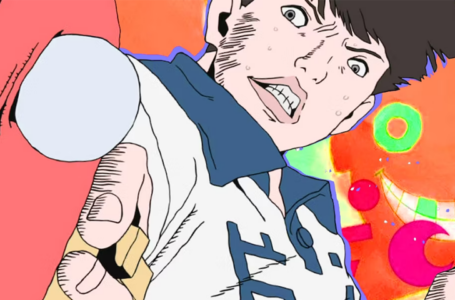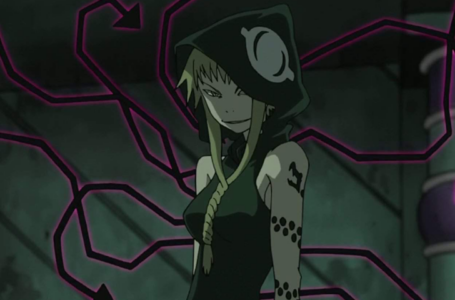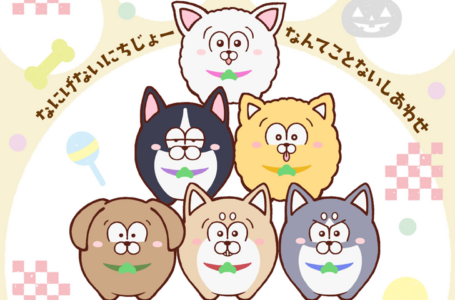The brilliance of Claymore: A passionate analysis
Claymore is an action/adventure shounen manga series, spanning from 2006 to 2015 while the 26 episode anime followed the plot of the first eleven volumes, with an exclusive anime finale that closed off the show in 2007. Having become a massive fan of the manga after watching the anime around the time it finished airing, I carried on following the manga with each new chapter and then finally purchased Viz Media’s complete manga set (which you may very well end up wanting to buy!). As my favourite manga ever I wanted to dedicate an article showcasing what makes it so brilliant and why you should have read it by now. Do know when going into this that I do discuss spoilers.
A thrilling dark story with a lot of heart
Claymore is a dark fantasy set in a world inspired by medieval Europe, where humans are constantly under threat by the flesh eating monsters known as Yomas. These monsters can disguise themselves as humans, making them detectable by Claymores only. The Organisation creates the Claymore warriors to exterminate Yomas, the only way to destroy them. The Claymores are half human, half Yoma due to being injected with the Yoma’s blood to give them Yoma power, the force that allows the Claymores to carry their large weapons due to improved strength. Certain Claymores are able to regenerate or heal quicker compared to others (defensive over offensive types) or sense Yoma energy. The stronger the Claymore, the more able they are to utilize these newfound abilities to form a unique and individual way of fighting using their Claymore swords, making for a lot of versatility even when the fights are exclusively sword based.
The plot takes no breaks and is always slowly unveiling its grand twist, making for continuous action with very little room to relax with no one ever being safe (The Northern War is the highlight of the anime for this reason alone), and with no possible return from the dead (unless you’re a previous number 1 that is!). What is definitely Yagi’s most impressive artistic flare is the designs of the Awakened Beings, previous high ranking Claymores that have exceeded their Yoma limit and are even more threatening than the common Yoma. Each one is phenomenal looking, unique, and extremely detailed, striking fear into us with their tall, grotesquely elegant designs alone. It was always a treat to turn the page to reveal the entire form.

The world of Claymore is dark and depressing, with many understandable comparisons made to Berserk that started before Claymore even begun. While just as mature yet gritty despite Berserk being a Seinen (aimed at older men) I would say that Berserk is in a realm of its own (maybe a topic for another day, that’d be a big one!), with Claymore not just being a lot less shocking in terms of horror material – even with all the cut limbs, decapitations and Awakened Beings looking like Apostles – but being a lot more smaller in scope and exploration of its story. You would think this would be a negative, but I argue otherwise as at least us Claymore fans did receive the conclusion Yagi had always planned for his manga.
It is a true shame that certain revelations were not as explored as they could be, but for what we did get, Claymore is a consistently emotional and action packed journey, with continuously improved art and deep overarching themes that are subtle and nuanced. Claymore’s artwork and depiction of strong women appear strikingly gorgeous, surviving its cruel and bleak world and it’s just one aspect as to why this Shounen title stands out because as a Shounen, it’s one of the most unique of the bunch. Let’s discuss how it plays with the formula of being a Shounen.
A beautiful image of strong women in a horrifying world
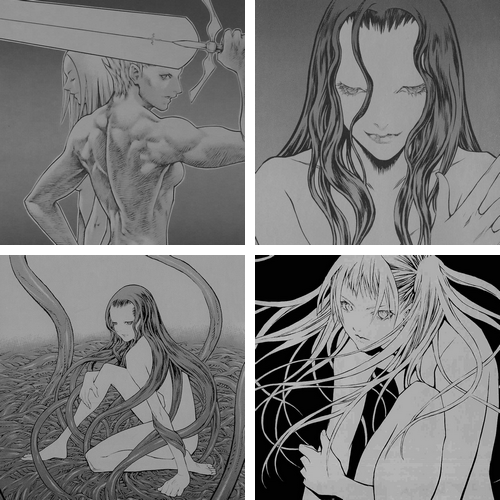
Claymore is full of strong, capable and independent female warriors, one of the key descriptions anyone who discusses the title will mention. This is of course no surprise, considering how the majority of manga and anime works have the tendency of using fan service as humor at the expense of its female characters (Rosario to Vampire being a prime comparison as it released around the time as Claymore). In what is the first example of females ruling this world, all the Claymores are female warriors since the male warriors that the Organization created in the past all became Awakened Beings. The act of awakening is similar to sexual climax, with all the males sub cumming to the pleasure. Claymore makes a point to show how its female cast is mentally stronger than their male counterparts in part for this reason, and at times even physically stronger. This can be seen as the strongest Claymore ever is Teresa, while the strongest Awakened Being to ever exist is Priscilla.
As a manga Claymore avoids all tropes and expectations of creating and exploring a female cast even when it dives into our female biology, from being maternal such as Clarice’s character sacrificing herself to save the child like Miata, and more emotional, such as Undine’s armored fragility. But it is all within reason and effectively builds up character development and motivations. However, Claymore always puts its focus on its main plot line; characters who are clinging on to the little humanity they have remaining, no matter their gender. What is most impressive when discussing the strong femininity of this Shounen manga is how the Claymores are never sexualised, and even in their Awakened Forms are not drawn to draw attention to their female form even when it’s feminized through noticeable breasts, long legs and hips. It’s the exact opposite of gawking.
As I said there’s a beauty in Yagi’s art that does not criticize nor shame his female characters. They are not depicted as sexual objects due to the armor they wear which covers them up wholly and for once making sense as protective gear in battle, a truly notorious design choice that plagues other anime (Ikki Tousen, High School DxD) and even JRPGs (Luminous Arc, Xenoblade Chronicles 2). In the few cases sexualisation is shown, from the assault of Teresa to Agatha’s lustful attitude, both examples encourages character motivations instead of blatant fan-service that overruns other Shounens. The bandit’s attitude makes for the trigger that causes Teresa to cross the line of no return by going against the Organisation’s one rule (to not murder a human), leading to her ultimate demise. This all important catalyst is the exact moment we see how much Clare being in Teresa’s life has made her change, for the better but at the same time for the worse. This is also foreboding to Teresa having to risk it all and even her battle hardened self to protect the person most important to her.
With Agatha, she is an interesting character within the series due to her being the only sexual female to grace it, showing her individuality as an actual breath of fresh air compared to the stereotype of the sultry female across many other manga/anime series. It’s not overdone and instead gives her a personality that differentiates her from the other female warriors, and even has a hand in making her a memorable Awakened Being. What a monster!
When it comes to the topic of feminism, I have no other manga I confidently deem as a prime positive example of this than Claymore, so much so that the female warriors are the source of strength and influence for other males through their actions and mentality (Raki, Galk and Sid). Claymore even passes the Bechdel test, the test of any media to depict at least two female characters converse on a topic not about a male. What it can ultimately be summed up in is Claymore stars a strong cast of females in a mission to overthrow the male-led organisation that have taken away their livelihood and corrupted them to have no sense of freedom, choice or will.
Not only are our female characters all focused on the action of slaying monsters and keeping their heads connected to their necks, they have no interest or time to indulge in romance. But relationships are still a massive part of the character’s motivations and source of strength, possibly the one key aspect of the title which is quintessentially Shounen. But why does it stand out so much?
A thoroughly brilliant revenge story
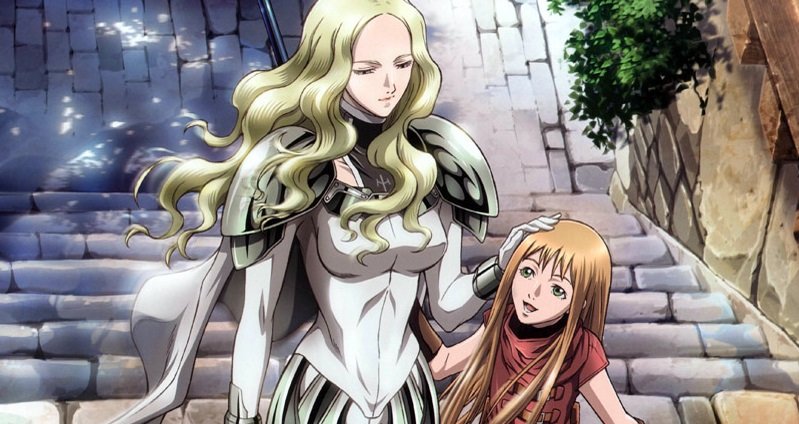
Our warriors, despite being half monster, all have very clear and human motivations that brings into question how inhuman they initially may appear as. This is obviously most explored in Clare. Sometime in her childhood Clare loses her family, becoming an orphan and somehow is unfortunately placed in the hands of a Yoma. This trauma has Clare mute and detached from reality until Teresa saves her. While Teresa wants nothing to do with Clare, merely killing off the Yomas in this village as she’d been ordered to by the Organisation, their bond strengthens in time, so much so that Teresa once being a merciless and cold fighter has learnt to be maternal and caring because Clare has come into her life. Teresa has found herself and Clare has rediscovered happiness.
In what I regard as one of the most iconic manga panels ever of Teresa’s decapitation at the hands of the Awakened main antagonist Priscilla, Clare’s road to revenge is set in motion, locating Rubel of the Organisation and having Teresa’s blood put into her, making her a quarter Yoma. The anime’s finale depicts the last fight between the two, and of course the manga, in between a war, closes off with the final confrontation between Clare and Priscilla as well. As an enthusiast for such storylines, my favourite being 2003’s Oldboy, both show not only clear and understandable motivations for its protagonists to carry out their revenge but also on the opposite end, deepening the impact of the character’s motivations and magnitude of consequences.
Priscilla’s past is as traumatic as Clare’s, where her morality and humanity is already dangling by a thread even as we’re introduced to her as a fully fledged, promising Claymore ranked as Number 2. Before becoming a Claymore, she loses her siblings after a Yoma disguised as her father kills them, witnessing him eating her mother. Priscilla beats her fathers head in, being the catalyst to her unstable state. Priscilla even before her awakening displays unsettling shifts in her personality, sounding and behaving extremely naively and childish even as a Claymore, and then reverting back to a child after fighting the Abyssal One Isley, the strongest male Awakened Being.
What would become yet another parallel to the Teresa and Clare dynamic is Isley and Priscilla, becoming the strongest Abyssal One duo, easily overpowering Isley’s rival Abysal Ones, Riful of the West and Luciela of the South. But by the time Isley is taken down, he has grown to genuinely care and love Priscilla, even feeling the closest to being human since his Awakening. This is despite Priscilla being just as focused as Clare is on her path to locating the lingering scent of the Teresa to kill her once again. It’s tragic considering the death of Isley, because unlike both Teresa with Clare and Clare with Raki, who keeps Clare feeling human and stable, Priscilla is never able to open up her heart and heal her trauma, something that could have actually saved her life and many others around her. All these bonds make for some wonderfully developed and linked parallels that tells even more on its characters and their progression, strengths and weaknesses, and in cases such as Isley’s, sometimes it’s too late to realize what’s important.
The tragedy of Claymore’s world isn’t only on its realistic setting that hearkens back to the plague, with the threat of death always looming over humans, but the Claymores themselves are also innocent in their suffering, with past traumas and poor upbringings that have brought them into this life of bordering on no return. The Organisation takes orphaned girls, children who have most likely lost their families due to Yomas and transforms them into these half human, half monster beings, pitting them off against one another in order to climb its ranks as they slowly become what they fear or hate.
This isn’t just Clare’s revenge story as she grows the strength to bring down the universe’s strongest monster, but the redemption of all of their fallen comrades and justice for their suffering at the hands of this greedy Organisation who are the true villains. Those who keep the deadly cycle alive by humans having to pay for protection, and creating these part monster warriors to fight an endless, bloody battle as a charade to mask this disturbing scheme. The rebellion is a showcase of women reclaiming ownership of their mistreated bodies and regaining their humanity after years of being exploited and used. Justice has never felt so rewarding.
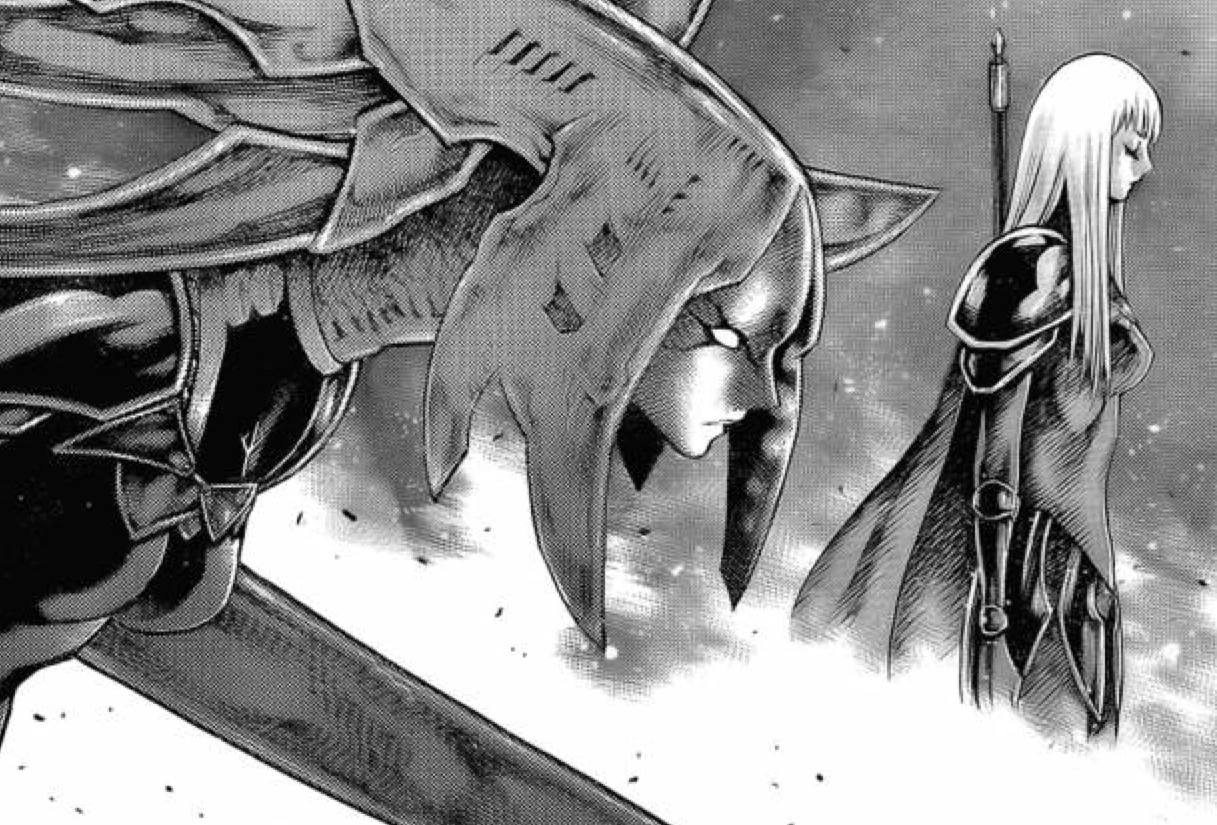
Where bonds are truly important
Such a theme is consistent throughout Shounen, from Naruto to My Hero Academia, and with Claymore, relationships are the driving force behind its entire plot. Miria’s motivation and one true goal is to investigate the Organisation to overthrown it due to the injustice of her friend Hilda’s awakening. Ilena helps train Clare because she wants to honor Teresa and even gifts Clare with her remaining arm to use in combat after failing to learn her Quicksword due to her jealousy of their relationship.
My absolute favourite motivation of a very minor character is with Undine, who uses two Claymores to fight with her dominant hand holding her deceased friend’s sword. Undine is one of the loudest, most aggressive Claymore’s of the cast, but underneath has the most heart of her comrades with the passion and willpower to fight to protect those weak around her to prevent someone else she cares for to be sacrificed. After her death, Deneve adopts her fighting style and uses Undine’s own sword in her dominant hand too. These dynamics aren’t immediately obvious and grow over time and attention, making for effective character development and has a hand in the progression of its cast’s reasons to fight and hold onto hope in this grim world.
Claymore’s main characters aren’t only fleshed out by delving into brief moments of their past that shows how tormented they are, but the supporting cast most notably the antagonists also hold their own values and motivations. The theme of morality is explored through these relationships, as even the most heartless of its characters have those they care for and explains why they are on the path they have been on, making for some very surprising and unexpected sympathetic characters.
Ophelia is extremely dangerous and wants her fellow Claymores to sub-come to their monstrous side for her own enjoyment, but also suffers from a backstory that has traumatized her (the loss of her big brother through his sacrifice to protect Ophelia from the awakened Priscilla). Riful, who forces Claymores to awakened through torture loves her big doofus of a consort Dauf, despite his low intelligence being the opposite of Riful’s cunning and scheming ways. It is even suggested that the child Riful born from their deaths was conceived by the two after Riful does everything she can even when fatally wounded by the Abyss Feeders to protect the dying Dauf from Priscilla. The fact that Yagi manages to make his characters so flawed but at the same time so sympathetic is astonishing considering how much carnage these troubled individuals cause. Such causes that are very similar to our protagonist’s pasts.
Loss, loneliness, love
Not only is loss a massive theme of Claymore, but loneliness is frequently explored. Claymores are part Yoma, as the power source for their increase of agility, speed and power, enabling them to dispatch the very monsters they may become. Claymores not only tread the thin line of humanity and monstrosity, but every single human being around them looks in fear of them as well. This is despite their job that puts their very life on the line to protect them. As mere numbers to portray their strength in the ranking system of the Organisation, and to be immediately feared by one glance at their silver hair and eyes by the very people they used to be, Claymores are lonely warriors. They are even looked at as a mere number and judged on their strength as their only reason for existing. The Claymores are all ranked from 1 to 47, with the lowest ranks always being shunned and oppressed due to being weaker by even their own fellow Claymores (Clare and Clarice being prime sufferers of this treatment).
This again reinforces the importance of their companions, especially the human ones such as Clare with Teresa, and Raki with Clare. And this is just one reason why I support the very unlikable character of Raki. Raki, who is not meant to be any focus over the leading ladies of the story gets his own redemption arc after the time skip by being even more capable than other Claymores as he is able to fight with a larger weapon than the Claymore and stand his ground against Yomas. But most importantly, the bond between Clare and Raki is notable by even the cast, where the romantic undertones is not often seen or even at all with Claymores.
So not only is the typical focus of romance almost none existent between the female cast, when it is, it’s a motivation for the characters, and extremely romantic at that (Clare’s goodbye kiss to Raki after Ophelia’s fight and reunion after over 7 years). Raki’s arc more so than Clare’s is typical of a shounen storyline, with Clare learning new techniques from more experienced Claymore’s with the earliest example being Ilena literally giving her a whole arm hand while Raki is taught by Isley how to swordfight during the 7 years. It’s a very exciting moment to see his improvement, and makes the eventual reunion with Clare even more touching and rewarding.

There are many pairings within Claymore that shows either a progression of a strong bond or the establishment of a important link that teaches the character a lesson. Clare receives Elena’s Black Card, a request to kill her before she goes beyond her limit and awakens. Elena was Clare’s only companion while training in the Organisation, growing close and forming the one bond she had since losing Teresa. This melancholic moment is in stark contrast to the only other two times the Black Card is used in the universe. The number 2 of Teresa’s time, Rosemary, uses her Black Card as a trap to challenge Teresa to the death, willingly becoming an Awakened Being to destroy her. Hilda, being on the cusp of Awakening sends her Black Card to Miria through Ophelia, of course never reaching her because she’s a ruthless snake. Not only do our Claymores go through loss and trauma before becoming part monster, the Organisation continues to damage their willpower, forcing them to cut down the few connections they have with one another in a world where even humans avoid them.
As I mentioned before with love in the series, the most obvious connection of such a link is the familial love between sisters specifically, this being Luciela and Rafaela and Alicia and Beth. After being tested to become fully and absolutely controlled by the Organisation, their failed experimentation of Luciela and Rafaela left the latter feeling broken and guilt ridden for the awakening of her sister, while Alicia and Beth were granted with a swift execution by the one enemy they were put through hell and back to defeat. The suffering of these sympathetic characters highlights the importance of having those close to you who care for you, as even in death their special other is with them. And that’s exactly what the teachings of this manga comes down to; it’s a gripping tale of revenge where the characters we love, be it protagonists or antagonists, are overwhelmingly sympathetic to the point where you wish for someone, anyone to be given a happy ending.
Hidden meanings and real-world influence
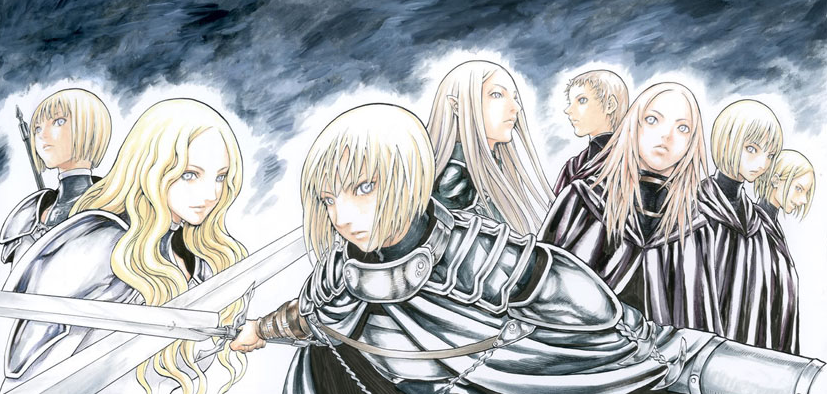
Not only are the strongest Claymores represented by their nicknames that hint to their individual abilities, but their names are symbolic to their motivations and characteristics. Ophelia’s name may be a reference to the mad Ophelia of Hamlet (Shakespeare), the first Claymore to appear as cruel and heartless. In Greek, a meaning of the name Ophelia is “serpentine”, which relates to her Rippling Sword technique where her dominant arm moves so fast that her sword looks like a snake’s movement. Miria’s name comes from the Hebrew name Miriam, which means “rebellion”, a direct telling of her motivation in bringing down the Organisation before she even mentions it in the story.
Jean’s name is a direct reference to Joan of Arc, possibly paralleling her death by burning at the stake to Jean’s first appearance being strung up and tortured by Riful to awaken. Rafaela’s name is the feminized name of Raphael, the definition of it being the healing God, possibly alluding to her leaving her left eye damaged beyond repair as penance for her sister’s lose of humanity, or by her killing Luciela to save her by forcibly stopping her feeling any more pain by death. Luciela could be a reference to the fallen angel Lucifer, telling of her loss of humanity to the Organisation’s testing of the two sisters, who once was a warrior (Angel) turned Abyssal One. These are only a few examples, but I will leave it at that since it’s even more exciting to discover for yourself how much thought Yagi put into what each character represents and manages to show in just a name.
Character designs of the humans hearkens back to the typical fashion of the time, and the heroes of the land are often refereed to as “Silver-Eyed Witches”, being a reversal of the traditional role of the medieval Witch who would have been burnt alive for her powers, but are now relied upon to save humanity. The titular weapon of the Claymore is also a reference to this time period, being a medieval two-handed longsword. Even the world’s locations are influenced by European places, such as Rabona which contains a gorgeous, Gothic cathedral resembling the historical Chartres Cathedral located in France. It’s all very clever and well thought out, being yet another reason why I love this series so much.
A small section dedicated to its glorious ranking system
This might be quite a personal preference, but I love a ranking system. From My Hero Academia to One Punch Man and even Shokugeki no Soma, the enjoyment I have of these titles mostly come down to its inclusion of a ranking system. I find the reveals of strong characters a thrilling and fun aspect of each title. My favourite example of this of course coming from Claymore, with the earlier example being the reveal of the Number 4 fighter Ophelia, the Claymore Miria previously warned Clare about to never approach but ends up alone with.
The upcoming confrontation due to this sudden meeting makes for the very first time Clare is beaten, and almost killed, a fate her own Claymore comrade was more than happy to oblige to. Claymore does this tension countless amounts of times, from the sudden appearance of the Number 2 male awakened being Rigardo wrecking carnage in the Northern War, and the first glimpse of the reincarnated Roxanne in the final stand against the Organisation, the most deranged and heartless of the Claymores even beating Ophelia in her depravity. The cherry on top is the amount of generations that are acknowledged in the manga, with 5 being mentioned but over 4 other characters being from other time periods. Claymore’s world is vast, and with a time skip spanning over 7 years there’s so many reveals waiting to surprise and excite you.
Final Comments

New generations comes with new rankings, and on top of this, a seven year time skip. Where the anime ends the manga continues with arcs that tell of the series’ major twist and eventual war. I would suggest to watch the anime for its fantastic OST and wonderful VA work from both the Japanese and English Dub for bringing these characters so effectively to life. Once finishing the anime, pick up volumes 11 to 23 to complete its story. Claymore has stayed with me since its final chapter and I’ve never felt the same way about a manga since then. So come back to us when you’ve watched or read it and let me know how much you enjoyed it in the comments!
Thank you for reading.
Join The Discussion
Rice Digital Discord
Rice Digital Twitter
Rice Digital Facebook
Or write us a letter for the Rice Digital Friday Letters Page by clicking here!
Disclosure: Some links in this article may be affiliate links, which means we may earn a small commission if you make a purchase after clicking on them. This is at no additional cost to you and helps support Rice Digital!
- Sigh of the Abyss: Shadow Bonds – Prologue Review - October 7, 2023
- Is She The Wolf? is wickedly addicting TV - October 6, 2023
- The steady consumption of Slow Damage - October 5, 2023




